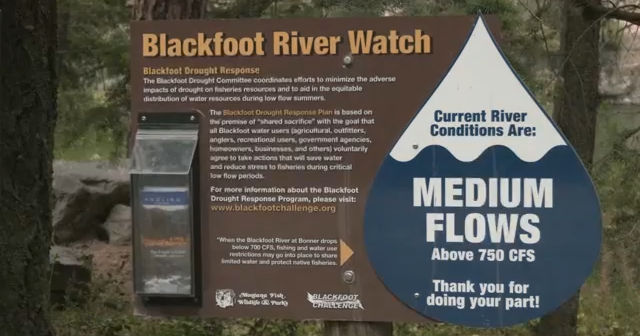Montanans who enjoy the Blackfoot Watershed and other rivers across western Montana should be prepared for an exceptionally low water year due to record low snowpack.
“This year our peak snowpack was only about 60% of normal,” Water Steward for the Blackfoot Challenge, Clancy Jandreau, explained. “That’s close to a record low for the area.”
The Blackfoot Drought Committee is calling for public cooperation to lessen the impact of a drought year on fisheries, agriculture, communities, and recreational activities.
Since 2000, the Blackfoot Challenge has had a drought response plan in place. Nearby irrigators voluntarily implement water conservation strategies to help preserve the watershed during drought years.
“These strategies include shutting down irrigation entirely and rotating operations to decrease demand on the river,” Jandreau stated.
Anglers also have a significant role in maintaining the health of Montana rivers during a drought. Rising water temperatures increase stress levels for native fish. The Blackfoot Challenge recommends fishing in cooler stretches of the river and using safer angling techniques, such as artificial lures and single hooks.
“Drought has become more common since 2000, and we anticipate this trend to continue,” Jandreau said. “If everyone participates during these challenging times, we can increase community and river resilience to handle stressful years.”
To get involved in preserving Montana’s rivers, consider joining conservation groups like the Blackfoot Challenge or Trout Unlimited. You can also participate in the 21st Annual Blackfoot River cleanup at Johnsrud Park on July 27.





